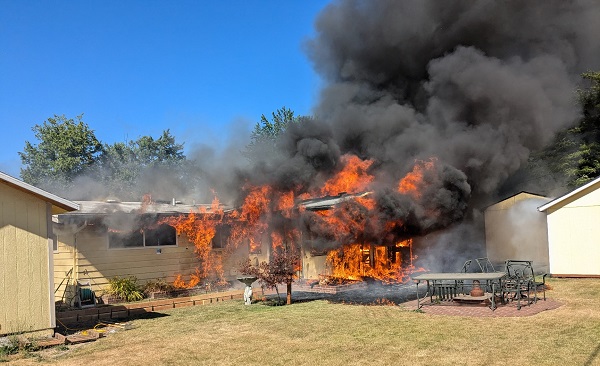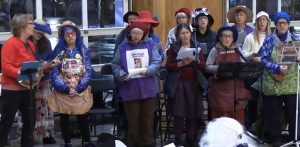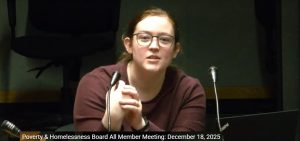Chief Caven: 141 fires in 1st week of fire season
4 min read
In the first week of the fire season, Eugene Springfield Fire responded to 141 fires, an average of about 20 a day. The heat wave also contributed to a number of water rescues. Reporting to the City Council July 8:
Eugene Springfield Fire Chief Mike Caven: Just to give you a brief update on how our crews have done over the last week as we saw our area enter fire season on July 1st (which is slightly early for our area): Today as we sit here, we’re in the middle of our first red flag warning of the fire season, which is critical fire weather, usually a combination of heat, temperature, and wind.
[00:00:39] Most importantly for why the red flag today is we dipped below a 20% humidity to 19% right about 5:00. And so that’s going to be the first of many we are upstaffed for it, upstaffed for both the heat and the red flag warning to make sure that we’re adequately prepared to serve the community.
[00:00:57] And it’s with kind of great pride that I bring up the service to the community that our crews have been performing over the last several days. This last week we ran 994 calls (which is a little bit higher than average); 2,100 unit responses in that time period and 141 fires. Those fires, it’s about a 40% uptick over the previous week.
[00:01:18] And then most interestingly is a number of water rescues as our community seeks refuge in our rivers. We will continue to see more debris in the rivers as the landscape upriver both on the McKenzie and the Willamette recover from the fire. More trees fall in the wintertime. They end up in the rivers and strainers.
[00:01:39] A number of these rescues have been relatively dramatic: People trapped in strainers, rescue swimmers getting off the boat or off the bank and into the water, into these very dangerous situations to support that. And so there’s a great deal of pride.
[00:01:53] We’ve had a number of significant fires that have threatened our communities: one off North Game Farm Road, which was about between 20 and 28 acres in total perimeter. It burned quickly and burned technically before fire season even really started. And then a number of other fires. We had a fire threatening BRING this weekend, early in the morning. We had a great response to that to protect that business.
[00:02:20] And then other than that, just a tremendous amount of work, a tremendous call volume, a lot of forced overtime due to staffing, and crews are showing up and they’re doing an excellent job and… just a couple other quick updates about interesting things.
[00:02:38] Our wildfire program is progressing with partnerships with the Western Fire Chiefs and there’s some community outreach that you’ll be seeing here shortly. And then the outcome through many of your work in setting a legislative priority ahead of the short session due to the closure of University District hospital.
ESF partnered with PeaceHealth and submitted a proposal for the innovation fund which secured us an advanced provider unit seven days a week at peak hours that will have a nurse practitioner or PA and a paramedic from ESF in the field with a number of opportunities. And we’ll schedule time as that evolves before we launch it to brief you on that, but lots of good work going out there, both operationally and administratively.
[00:03:19] John Q: Chief Mike Caven praises the work of Eugene Springfield Fire. The two cities used to have separate fire departments. August 2024 marks 10 years since they merged.
[00:03:34] Councilor Randy Groves: Shortly after we integrated crews, we had three sentinel events over a two-year period of time. The first was the Swanson Mill fire in Springfield, which was a horrific, very large event, a lot of exposures, a lot of risk, including chemicals.
[00:03:50] And that was a place where on that day, Eugene helped supplement Springfield. The following year, we had two sentinel events and it’s interesting. It worked out to be a one-third, two-thirds split, just like our two cities. We had the Civic Stadium fire on a red flag warning day where the flame lengths were, the wind was taking these probably 60-foot flame lengths and they were also blowing them flat and creating huge exposures on College Hill.
[00:04:17] That was followed up by the bowling alley, Southtowne Lanes fire, with the bowstring truss roof that collapsed and huge exposures there too, where we really relied on the Springfield resources coming over to augment and also backfill and spread out our resources further. And I compare that to another incident on Labor Day of 1994.
[00:04:42] I was a battalion chief at the time, and we had a high-rise fire in the Eugene Hotel that basically stripped everything we had in Eugene. And it was a hot, busy day and we had a fire that got started on Willagillespie Butte and being able to rely on mutual aid helped, but we had really no more than like one available Eugene resource for the whole city.
[00:05:05] So, I feel a lot better now knowing that everybody’s trained to the same standard and we have fully integrated crews. And again, it still makes me proud to see how our people perform.
[00:05:18] John Q: A busy start to the 2024 fire season.
Image courtesy Eugene Springfield Fire: Firefighters responding to a two-alarm house fire in Northeast Eugene the afternoon of July 7 arrived to find heavy fire from the garage and rear of the residence.




